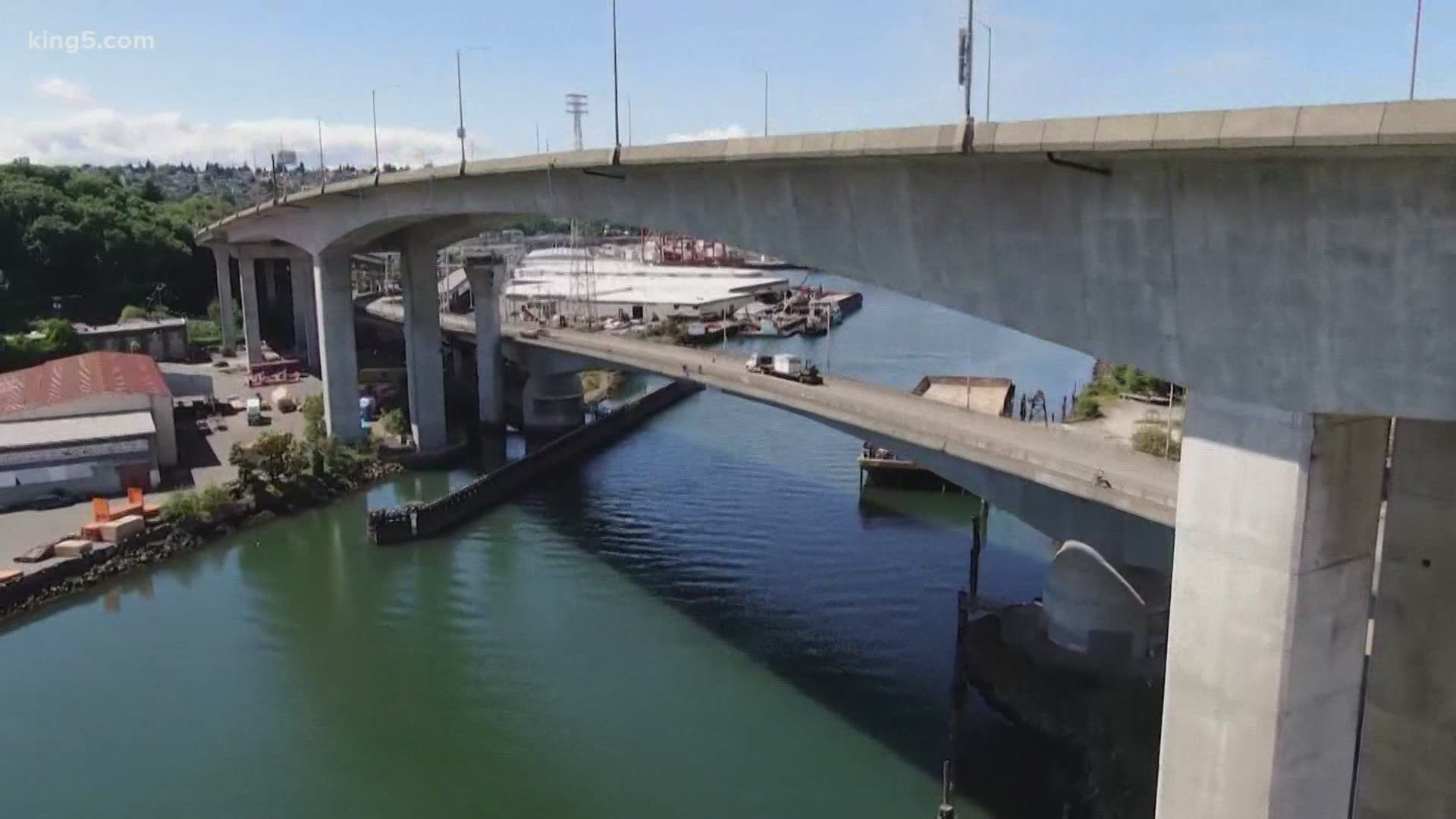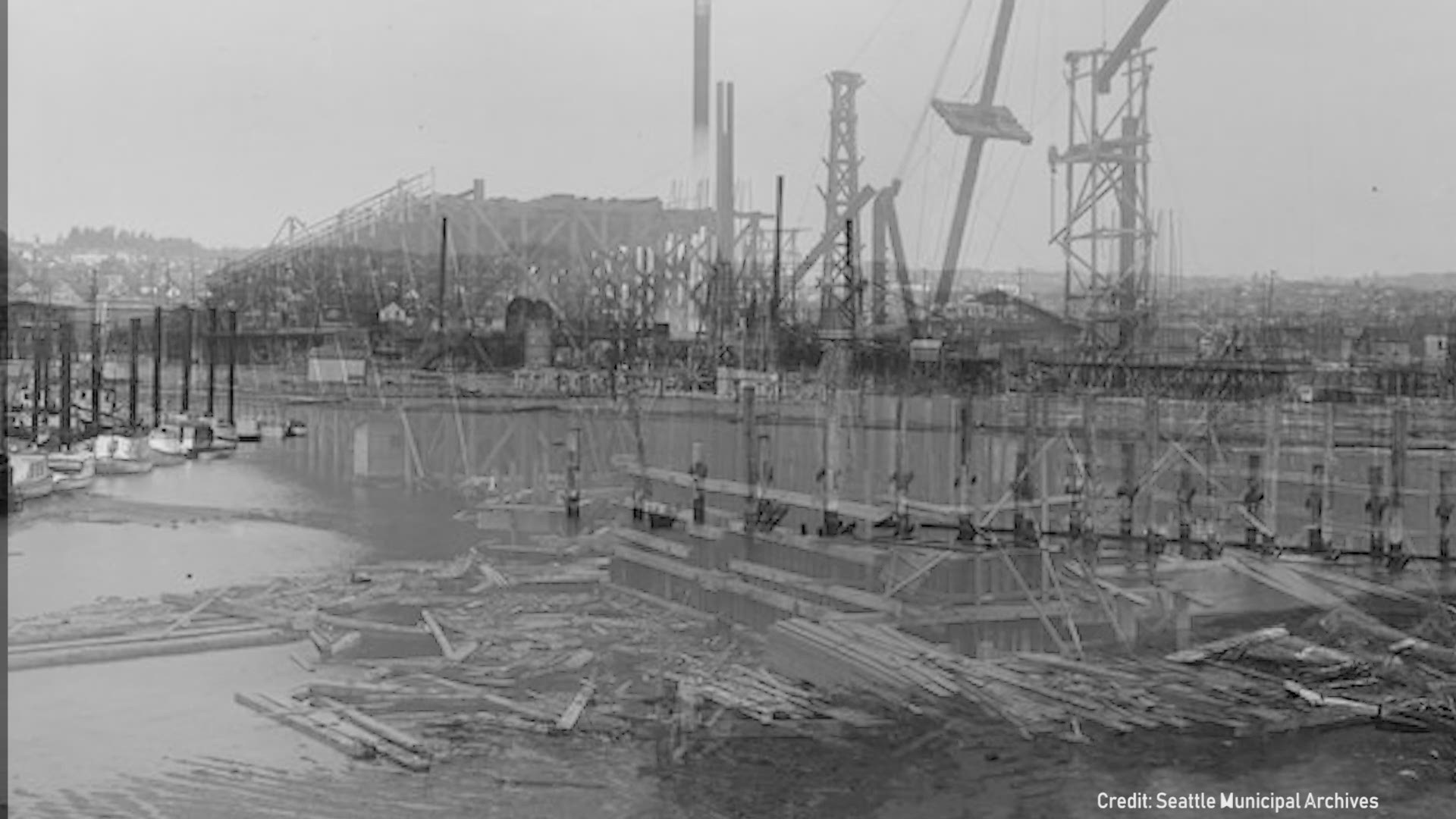SEATTLE — More than 14,000 times per year, the Seattle Department of Transportation raises and lowers its drawbridges. This requires constant maintenance work to serve a city that lacks the money and plans to replace its aging bridges.
Transportation officials have identified about $7.8 million of urgent projects to keep the 100-year-old Ballard, Fremont and University steel-deck bridges, and the Spokane Street swing bridge, reliable for marine openings.
Seattle City Council members have been reluctant to pour large amounts of money into bridge preservation, favoring other transportation services and safety work.
A 2020 audit analyzed 77 vehicle bridges that are owned and maintained by SDOT. It found that most Seattle vehicle bridges are in fair condition, compared to poor or good using the federal rating system. The report also found that over the past 14 years, the average amount SDOT spent on bridge maintenance was $6.6 million annually.
"The City of Seattle recognizes the need for more investment in bridge maintenance, but is not spending enough on the upkeep and preservation of its bridges, and risks becoming out of compliance with federal regulations," the audit report said.
The audit was requested by Councilmember Alex Pedersen, who is also the chair of the Transportation and Utilities Committee, following the unexpected closure of the West Seattle High Bridge in March 2020 due to cracking.
In analyzing SDOT's 77 vehicle bridges, the report found that, in 2019 29% were in good condition, 65% were in fair condition, and 6% were in poor condition. The median age of these bridges is 77 years, according to the report.
The report emphasized that a bridge rated as poor is considered structurally deficient, but it is not necessarily considered so unsafe to prompt a closure. However, the report said the number of Seattle's bridges that are in poor or fair condition is concerning because several of the largest and busiest bridges in the city are not in good condition, which puts them at an elevated risk of unexpected closures. Also, a rating of either poor or fair does not mean that current SDOT maintenance levels will keep these important bridges in working condition, the report said.
The report said most of SDOT's bridges are in fair condition, but over time, they've gotten worse. Since 2010, the percent of total bridges in good condition in Seattle has declined from 38% to 29%, according to the report.
Seattle isn't the only city with bridge problems. The report found other major cities across the country have a high share of bridges in poor or fair condition. Some reasons for this is that funding for bridge maintenance and upkeep is challenging, especially for local governments. And, according to the report, about 40% of U.S. bridges were made more than 50 years ago, which means many of the bridges in the country are aging out at the same time.
In the report, SDOT estimates its annual spending is tens of millions of dollars less than what is needed to maintain its bridges. SDOT's most conservative estimate of what is needed to maintain and preserve bridges is $34 million annually -- that's compared to just the $6.6 million currently spent annually for these projects.
According to the report, SDOT has been working to transition from a "reactive" to a more strategic and proactive approach to bridge maintenance and preservation since 2018, but the department still has a long way to go.
The audit offered several recommendations to SDOT, including developing legislation to address current bridge maintenance priorities, and develop and implement strategies to fill the bridge maintenance funding gap. To see the full list of recommendations, view the audit report here.
The next big milestone for SDOT will be taking steps to ensure compliance with its next formal federal review, which is set for 2022.


